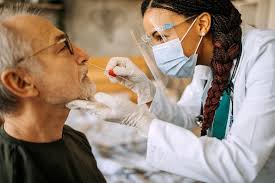
INDIANA – The U.S. is experiencing a summer surge of COVID cases, with emergency room visits increasing.
The latest figures from the Centers for Disease Control and Prevention show emergency room visits increased more than 23% from June 16 to June 22, and deaths due to COVID were up 14.3% in recent weeks.

Experts attribute the upswing to a growth in FLiRT variants, which include KP.3, KP.2, and KP.1. KP.3 and KP.2 – accounting for more than 50% of all current cases. Such mutations are to be expected, according to the CDC. Viruses constantly change through mutation, resulting in new variants.
“As the virus spreads, it may change and become harder to stop,” the CDC said on its website.

The COVID vaccine should protect against the new strains. Still, preliminary evidence suggests that it may not offer as much protection against the FLiRT variants.
The CDC recommends staying current on the COVID vaccines and boosters. Speak to a doctor if you’re unsure about if and when you need a booster.

Other preventative measures include practicing good hygiene, such as frequently washing your hands with soap and water for 20 seconds and improving air quality in your home by opening doors and using exhaust fans.
While FLiRT variants do not appear to cause more severe illness, there does appear to be one symptom that is the most common. Sore throats are reported by more people who test positive for FLiRT variants.
Other COVID symptoms are similar to those reported with previous variants:
- Body aches
- Chills
- Congestion
- Cough
- Fatigue
- Fever
- Headache
- Congestion or runny nose
- Nausea or vomiting
- Diarrhea
- Loss of taste or smell
Current CDC guidance recommends that people isolate themselves without medication for at least 24 hours until their symptoms improve and the fever is gone. After that, they should take extra precautions for the next five days.



